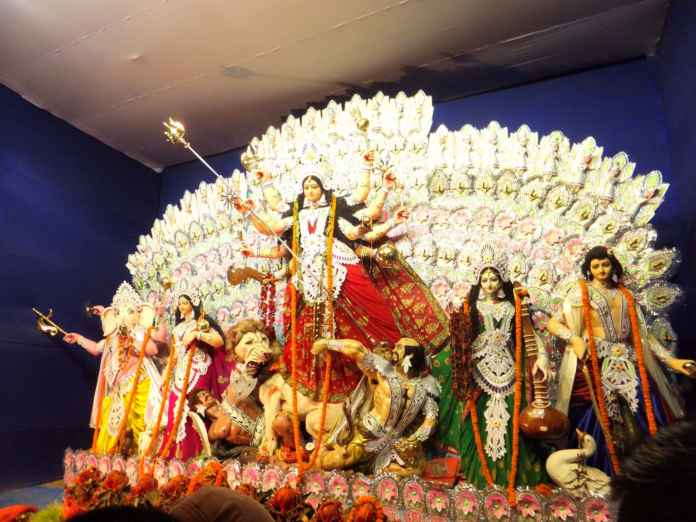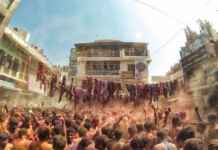In today’s India, Durga pooja is not limited to just a religious festival yet it is observed as one of the major social events. It has an enriching cultural significance as all and sundry takes part in its merriment. People from all religious background participate in it. It is celebrated as a secular festival. During this festive time, our country witness tourists from the world. There is feast and music everywhere in the city. Durga pooja is that moment of the year when every person enjoys irrespective of their societal class. Everybody is in a festive mood. Let’s give a tour to different cities of India and know their own unique way to celebrate the celebration.
West Bengal – In West Bengal, the Durga pooja is celebrated with immense solemnity and magnificence. The chief celebrations are carried out for over a phase of five days. The festive era is said to be in remembrance of Mahalaya, which is the day on which Maa Durga was given the job of conquering Mahishasur. This ritual is also known as ‘Akal Bodhan’ or ill-timed prayer. Durga Pooja’s usual time is during Basanta Ritu. However, the time we celebrate Durga Pooja is during the Hemanta Ritu (autumn). This is believed to be so because during the war of Ramayana, the holy goddess heard the prayers of Lord Ram and eventually he got victory over the Ravana. During these five days, people in West Bengal wore new dresses and have feast in big and lavish pandals together with community members.
Gujarat – Gujarat is famous for its Navaratri celebration. Idol of ‘Ambe Maa’ is placed in the middle of a big ground or hall. People perform garba which sometime includes dandiya raas also around the idol. People get dressed in traditional vibrant coloured dresses and show the true spirit of festival. Practice of dance steps is done much prior to the festival. This festival mesmerizes the people to understand the beauty of ethnicity and tradition of India. During this festival, Gujarat’s spiritual values are replicated along with it display the rich culture of state.
Maharashtra – In Maharashtra, the Durga pooja is a blissful event. A pooja is carried out on each of the nine days of Navaratri. Every day, a spanking new garland is placed on the statue or picture of Maa Durga, without taking away the garlands of the preceding days. At the conclusion of Navaratri, all the nine garlands are removed collectively. On the tenth day, young girls who have not yet achieved puberty are invited to the home. They are given to eat a feast of their choice and are given gifts. A rangoli is put at the doorway of the home, outlining an elephant.
Kerala – The Durga pooja celebrations are known as a prosperous time in Kerala. Children among the age group of 3-5 years properly commence their education at this moment. Apart from this, festival is celebrated in the temples for a period of ten days, the very last three days have utmost importance. The Ayudya pooja is performed on Ashtami (the eighth day). On this day, all equipment and tools are worshipped. Also, nobody use any equipment on this day. Navami (the ninth day) is devoted to the goddess Saraswati unlike other parts of India. In every home, books and other forms of literature are given pooja. Natives also visit the most famous Saraswati temple at Kottayam. There, they take bath in the mystifying divine pool, whose source is unidentified.
Kashmir – Durga Pooja in Kashmir is not as luxurious as those in the other parts of the nation. Here, adult individuals fast whole day in respect of goddess Durga. On the opening day of Navaratri, barley seeds are sowed in earthen pots. By the end of tenth day, they raise to about five inches. It is believed that a good growth of the plantlet is a sign of prosperity and happiness throughout the year. Kashmiri pandits visit the temple of the goddess Kheer Bhawani every one of the nine days. A special pooja is performed on the ninth day after which people break their fast.













